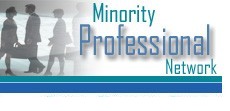You’re bombarded with messages in one
form or another all day long. You can’t get away from it. There is a
constant battle with paper overload, and the addition of electronic mail
causes many of you to spend more time than you want to trying to manage it
all. You can handle e-mail overload if you develop efficient ways to deal
with it. This will help:
· Choose your service
provider wisely. Before you
sign up for e-mail service, you should check the provider's privacy
policy. Most of the free services (and some of the paid ones) sell your
e-mail address to third parties. Read between the lines, and understand
every word of their policy. Having free e-mail is not worth it if you
can't stop the junk! Using Microsoft Outlook, you check e-mail from your
computer desktop instead of being forced to go to a provider's Web site
and deal with the pop-up ads and other distractions on their site (press Ctrl+W to close the pop-ups). Also, some providers are better at providing
built-in filters to block junk e-mail that comes through the system.
· Do the Inbox on a regular
basis. You'll have to establish
a routine for checking your e-mail every day so it won't pile up. Set
aside a special time of day to check it, and deal with each message as you
open it: delete it, forward it, schedule it, respond to it, file it, or
pend it.
If you have a
tendency to keep too many messages in your Inbox, set up special folders
to move them to. If you put a number in front of the folder name, you can
have them appear in a particular order. For instance, if you keep messages
coming from your clients, create a main Inbox folder called "1Clients."
Then, create subfolders for each client (or put all messages in the
Clients folder if you won't have many).
If you have
messages you need to follow up on later, either create a "2FollowUp"
folder in your Inbox (or desk), flag the message for follow up, or drag
the message to your computer calendar icon or folder to set a reminder
(Outlook has all these features. Close the message before you attempt to
drag it).
Putting the
number "1" in front of Clients will make that folder appear first in your
Inbox folder list. Putting the "2" in front of FollowUp will make it
appear second in your folder list, and so on.
If you’re
keeping e-mail messages to “CYA,” instead of leaving them in your Inbox,
create a folder to drag all of them into. If you ever need one (which is
doubtful), you can use your software’s Find feature to locate it. Purge
this folder often.
· Let people know upfront
that you do not want to receive certain types of messages.
A lot of people absolutely do not enjoy receiving jokes, thoughts for the
day, chain letters, and all those other e-mail messages so many of you
feel compelled to send. They want you to stop, but they're too embarrassed
to say so.
Create an
automatic signature that will go out with every e-mail you send that says
something like: "Please do not add my name to your distribution list for
jokes, prayers, thoughts for the day, chain letters, etc. Thanks!"
· Ask people you know to
stop. Develop a spiel to send
to people you know who are sending you junk that goes something like this:
"I appreciate your thinking about me, but in an effort to streamline my
e-mail messages and manage my time, I have to ask you to remove my name
from the distribution list that you're using. Thanks!" If this doesn't
work, call them and be firm.
· Use a junk e-mail filter.
Use feature-rich e-mail software such as Microsoft Outlook. Its junk
e-mail feature searches for commonly used phrases in your incoming
messages, and will automatically move the message from your Inbox to any
other folder you specify, including the trash folder. It can also change
the color of a message it suspects of being junk so it's easy to
recognize.
·
Don't respond to
spammers. When you get
unsolicited e-mail that is clearly junk, don't respond. Responding only
verifies to the sender that you're a valid e-mail address. Instead, add
them to your Junk Senders list if your software has one, and delete the
message without opening it. The Junk Senders list will block any future
e-mail coming from that sender.
· Set up a separate e-mail
address. Don't leave your main
e-mail address on sites for Newsgroups, free services like greeting card
companies, online membership directories, etc. Instead, set up a separate
e-mail account (maybe one of the free ones), and leave this address on the
site instead of your main one.
You have important
work to do. Creating systems for everything you do, including managing
e-mail, will help you get a lot more work done than you think you have
time to do.
Peggy Duncan is
the author of "Put Time Management to Work: Get Organized, Streamline
Processes, Use the Right Technology" and "Just Show Me Which
Button to Click!: Computer Training for Busy People" (order by
calling 1-800-431-1579, or on
www.amazon.com). Visit Peggy’s award-winning Web site at
www.peggyduncan.com for
more tips and a free subscription to her monthly online magazine, COPE.
